Justin Chance: running a sewing machine through a picture plane
Justin Chance utilises a material structure of dissemination to speak to broader issues of political networks and the power of language
Justin Chance loves rules. As an artist and writer, he works across many mediums — sculpture, drawing, print-making, papier-mâché, etc. However, for the past eight years, he has dedicated the bulk of his practice to quilting, exploring the bounds of running a sewing machine through a picture plane. Technically, to qualify as a quilt and not merely a textile, blanket, or painted fabric, it requires a back, middle, and top layer, with a stitch running through all three. Within these confines, there is an entire expanse of time and history to be explored and a material and ontological language in which to stretch the rules. Working beyond the object commodity of skill, craft, and technique, Justin Chance has devised a personal system of quilt-making to reorient how we process a quilt. Materially, this is achieved by making the top layer transparent, often silk, to shroud the middle layer, all supported by a base that peeks out from the edges. The top obscures the action while elongating the field of view, so one must pass through the skin of the image to access the meat and witness the skeleton. Justin Chance exposes the often unseen internal networks within quilting that are both technical, yet signal a broader understanding of society’s intersubjectivity, and the slippages and sparks that occur in these muddled, in-between places. Within the break and the blur, the moments of illegibility and miscommunication are where Chance’s work is most potent.
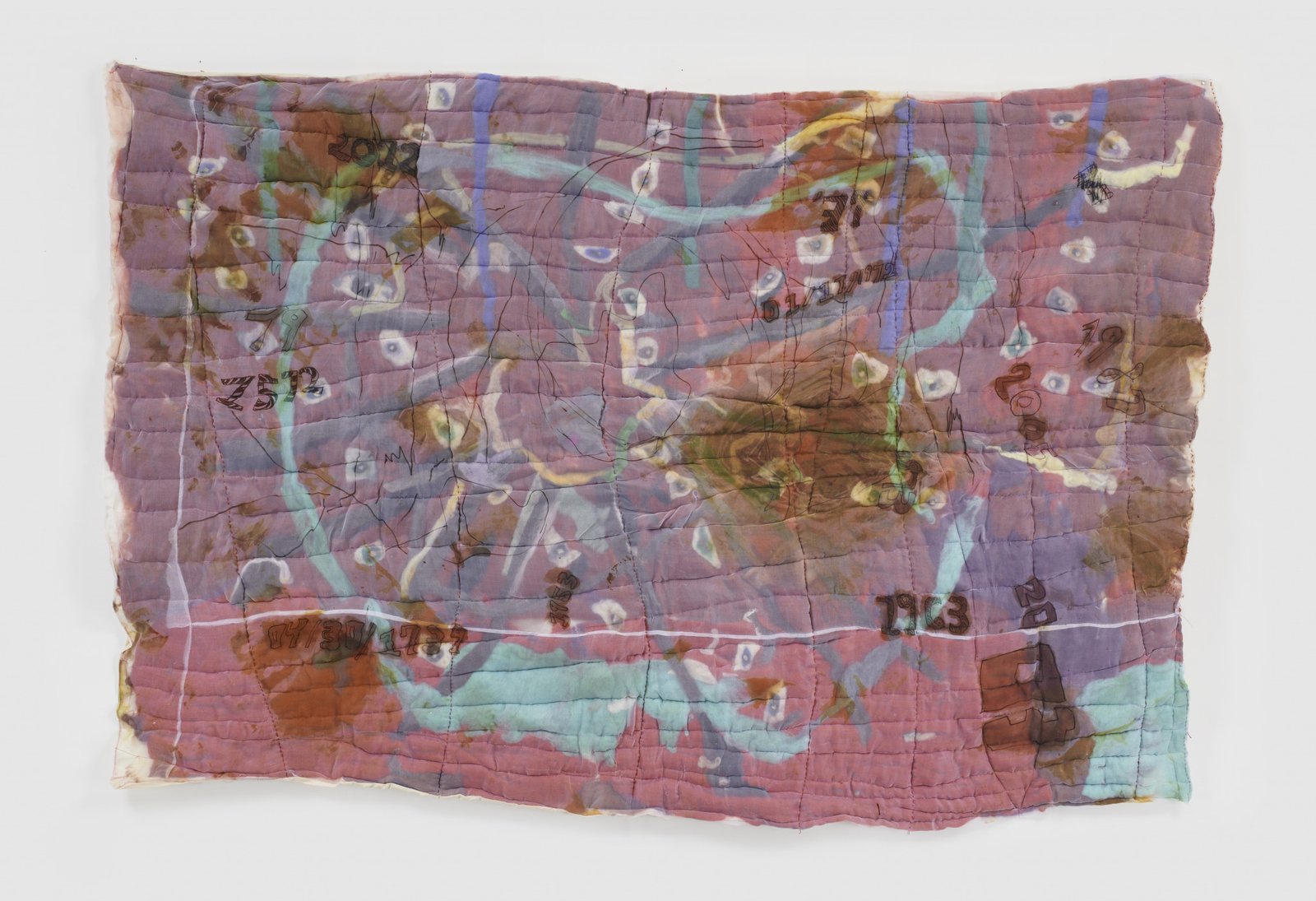
Spider (2018-2021), shown as part of his solo exhibition Low-Life (2021) at Smart Objects in Los Angeles, is a white line spiralling into a black background, with a web of textured veins emanating from the centre. While the web is a design device for capturing a viewer, it is also a metaphor for the structures of entrapment in society on conditions of race, class, autonomy, means, proximity, and access to power. As the title suggests, and the work signals, the piece is a spider web, a quilt enmeshed in silk, much like the silk proteins of a spider’s web. The transparency of the silk operates for human viewers as the web does for insects, pulling someone in and constricting them in place. For many insects, spider webs are invisible, so they are bound by a network that they cannot see. The bioengineering of the web is a phenomenon designed to hold and even paralyse. For a viewer of Justin Chance’s work, when you realise the spiral is a web, it’s too late; you are already bound, trapped within the silk and pulled into the middle and back layers of cotton and wool.
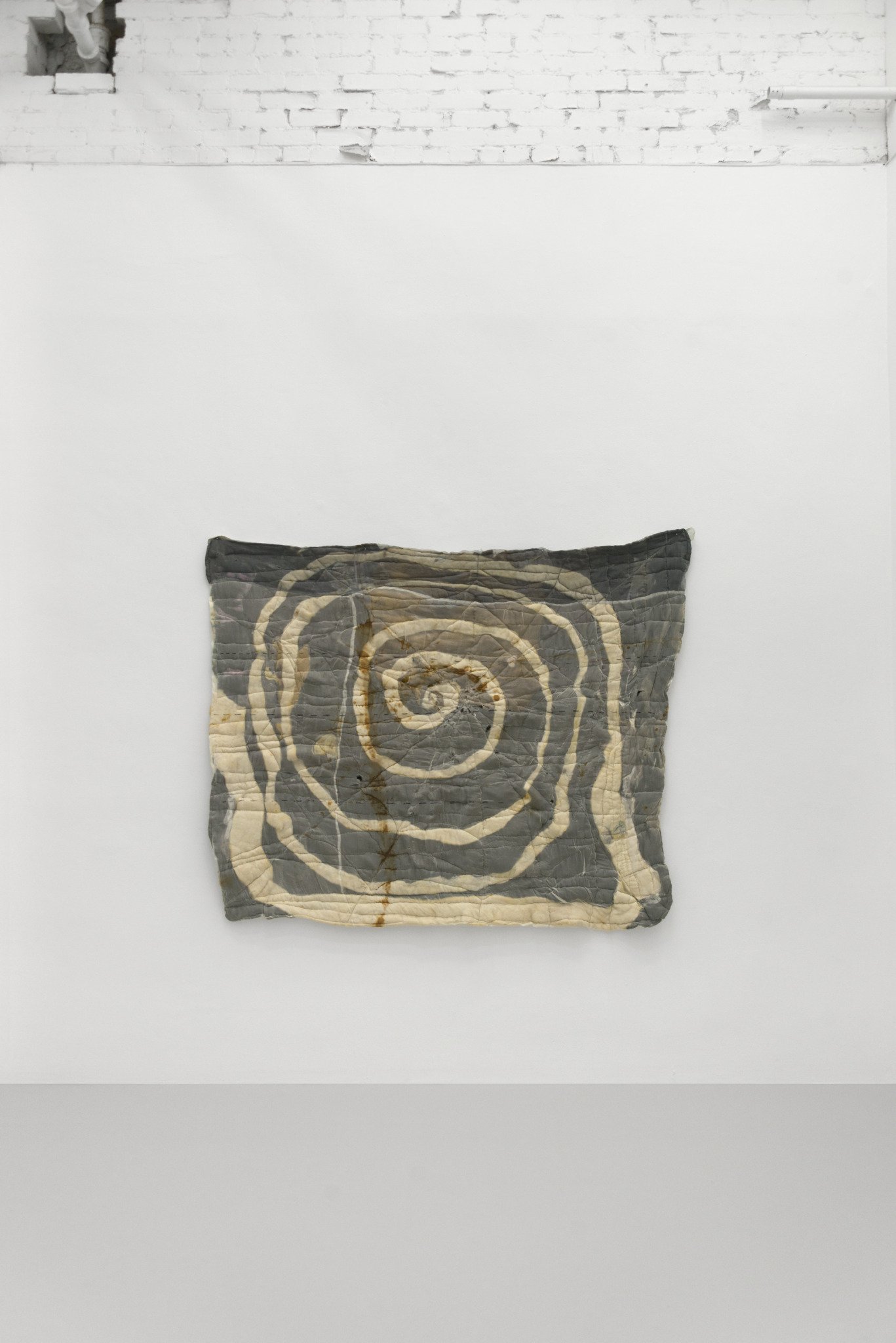
Currently based in his home city, New York, Justin Chance’s research began with a class on quilting while undertaking a BA in Visual & Critical Studies and a BFA at the School of the Art Institute of Chicago. The pedagogy of quilting is laborious but also poetic and intuitive. With the wet felting technique, the maker must agitate the fibres through rolling and stripping, shaking the lanolin, a natural wax in wool, to bind the fibres as they expand and constrict. The fibres lock into each other through movement and heat, free of any glue or adhesive. With the needle felting process, the maker stabs the fibres with a stitching needle and increasingly adds more pieces of felt. Employing both these methods, Justin Chance also dyes his own fibres, a methodical process that draws upon a nuanced language of how fibres receive and adapt to various pigments. Through an unfolding process of friction, the fibres cross-pollinate pigments and settle in varied forms. Justin Chance utilises this material structure of dissemination to speak to broader issues of political networks and the power of language.
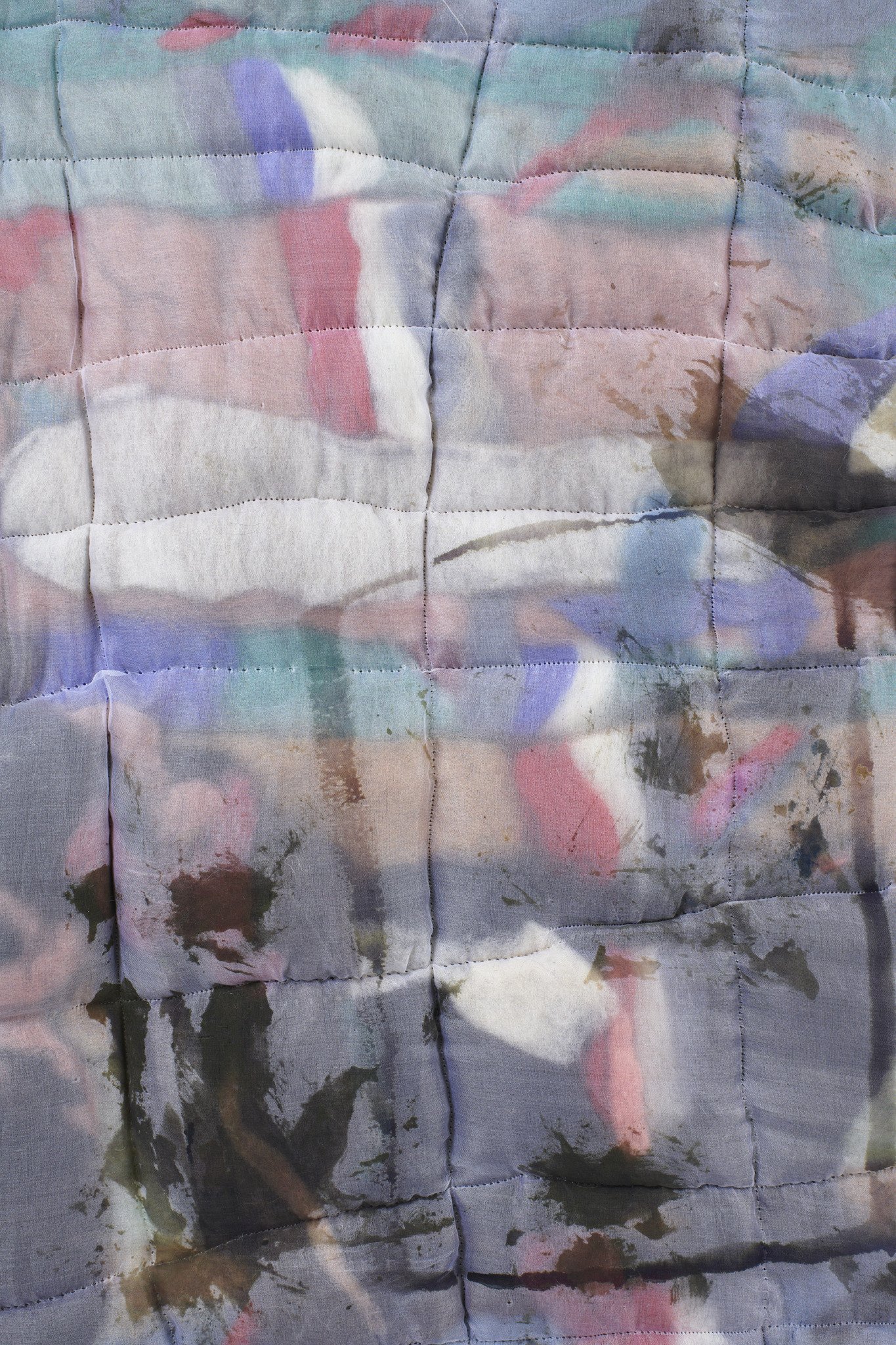
The prevalence of English, the most spoken language in the world, is largely due to the colonialism and imperialism of the British Empire, a small island nation whose networks transformed global communication. Among the many legacies of British colonial rule is the existence of the Commonwealth of Nations, a political association of 54 member states, almost all of which are former territories of the British Empire. Featured in the same 2021 exhibition at Smart Objects was the work Commonwealth (2020/2021-ongoing), a series of drawn butterflies that, in their material and delicate lightness, carry the symbolic weight of representing the nations of the commonwealth. When speaking about the Americas in a recent interview, Chilean artist Alfredo Jaar reiterated an ongoing concern in his work that “language is not innocent. Language represents a geopolitical reality.” (1) Language has the power to dominate — to shift an ideology and control a narrative.
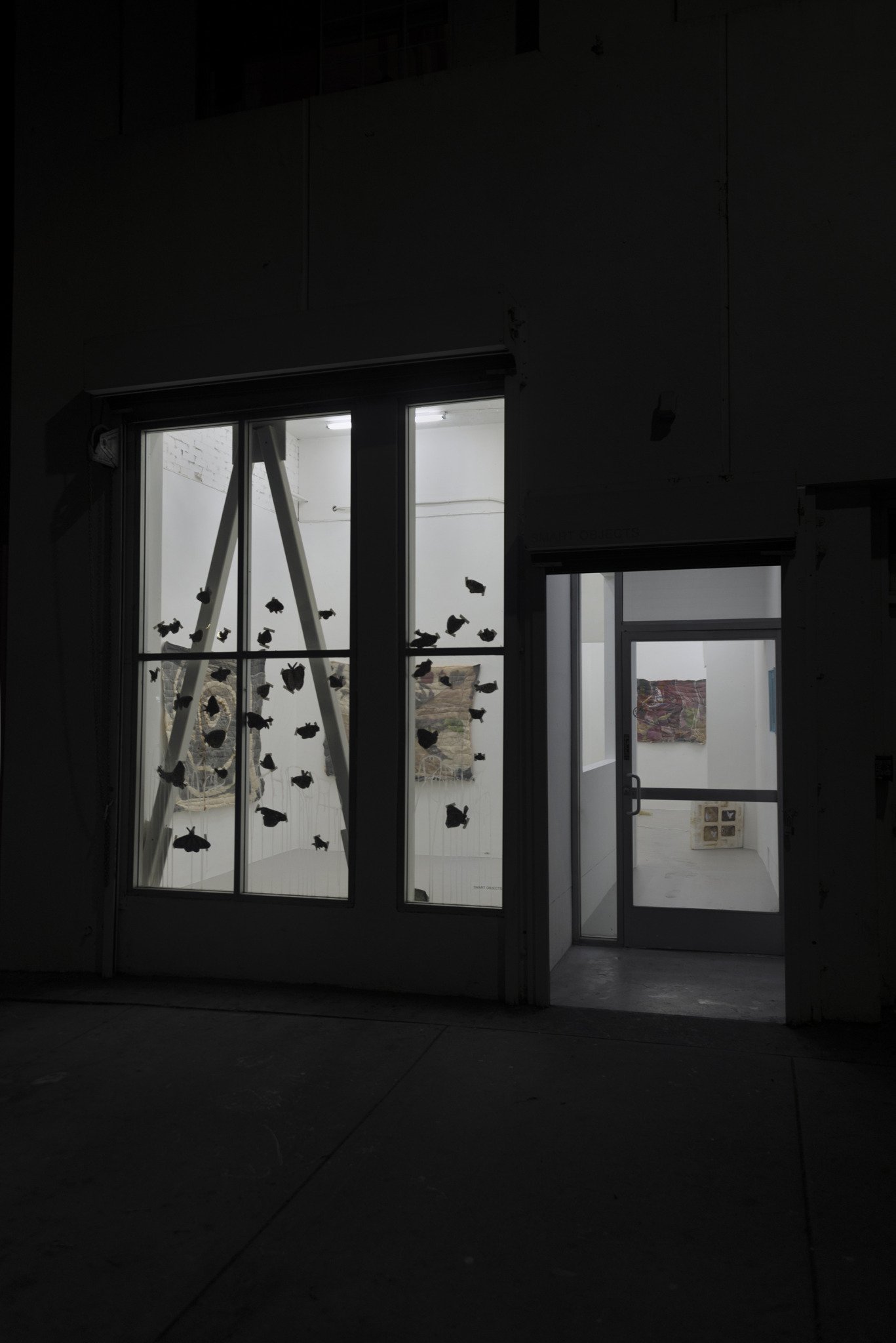
In a recent phone call with Justin Chance, we spoke about the narrative of butterflies, about their character. Ultimately, their story is a metamorphosis from a cocoon to a butterfly, from containment to flight. Though, little is discussed about what happens after the climactic transformation. What about the butterflies who encounter a web? What is the subplot? In the context of the commonwealth and former colonies, many of which are also small island nations, the question is what happened after independence from colonial rule? What was and continues to be the process of decolonization? While the butterfly is a symbol of new beginnings and migration, what are other routes and methods of communication for understanding the nuanced arc of empire?
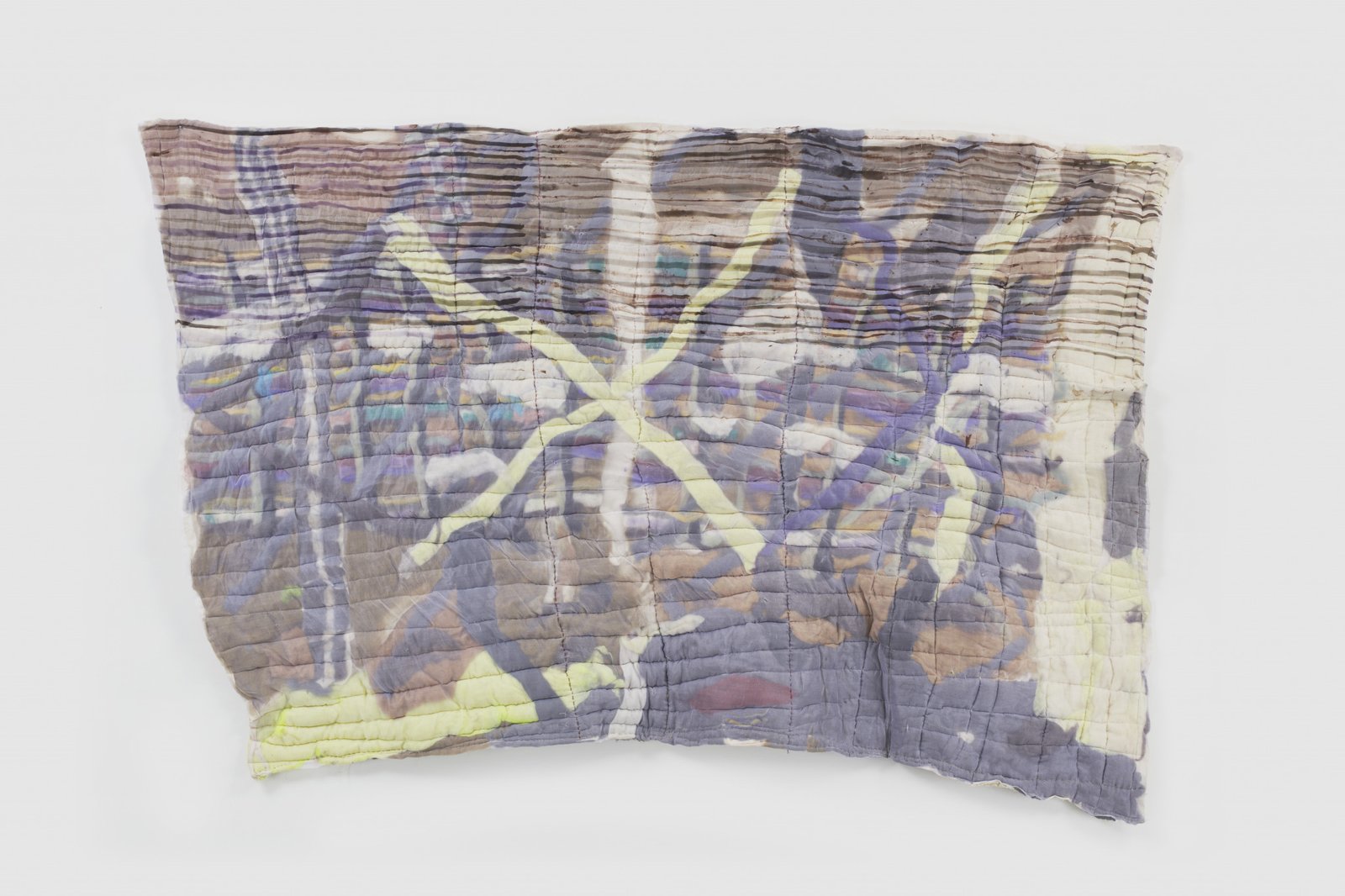
As a writer, Justin Chance is acutely aware of the potential and shortcomings of language. He is quick to note that if an idea is best expressed written, he will write, and for those thoughts that can’t translate, it is the place for art. While words often carry an authoritarian weight, or at the very least a directive, the image offers more points for entry and escape. In the exhibition text for Long Distance (2018) at Smart Objects, he binds language with land, invoking an ecological read on the legacies of colonial communication. He writes:
Exploring distance, the way The English Language did….when it lunged itself from its tiny- island sitting-position across the world. It was such a strain, in fact, this stretching, that it sweat into the Atlantic, into the Pacific, the Indian and eventually the Arctic (watering the algae, which the fish ate, who were eaten by bigger fish ate, who were then eaten by people, who were then eaten by the ground, which was then eaten by the sea and so on and so forth…)
Exploring distance the way that black and brown people did––––when they were borrowed from their homes and respective continents to garden elsewhere. Exploring distance, the way The English Language explored distance over these Black and Brown people––– into their synapses, over their tongues, through the tiny spaces between their tiny teeth and also their children’s…
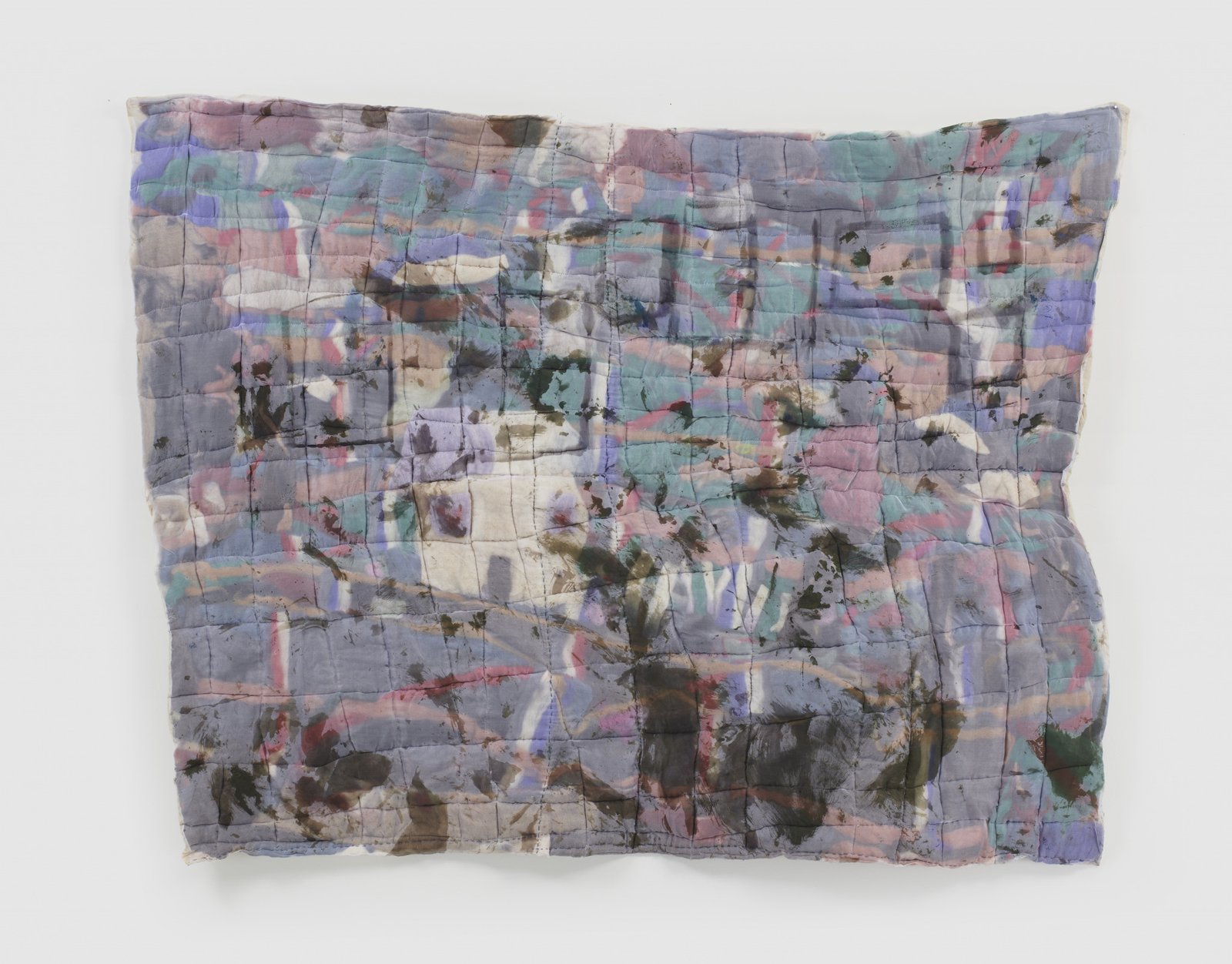
Over great distances, English operated as the guiding structure for enacting violence against people and the earth. Justin Chance’s research on the intersection between language and the environment is most explicitly explored through his work on The Collaborative Centre for Storm Space and Seismic Research, a non-profit publishing and research centre that he co-founded with Hunter Foster in 2018. The main output for the project is an annual calendar that centres around specific ecological themes. While the project is currently on pause, the first three issues of their calendars, “2019,” “Doomsday,” and “Beast,” showcased artist projects alongside dates signifying moments and events related to the animal, death, as well as scientific and interspecies concerns. Here, the word and image are interconnected with issues relating to the earth. While the word is control, there is always a slippage, a gap, and an obstruction — this is the space Justin Chance squeezes into.
(1) Andrew Zuckerman, “Alfredo Jaar on Bringing Reality Into Focus,” Time Sensitive, April 2022.
June 6, 2022
